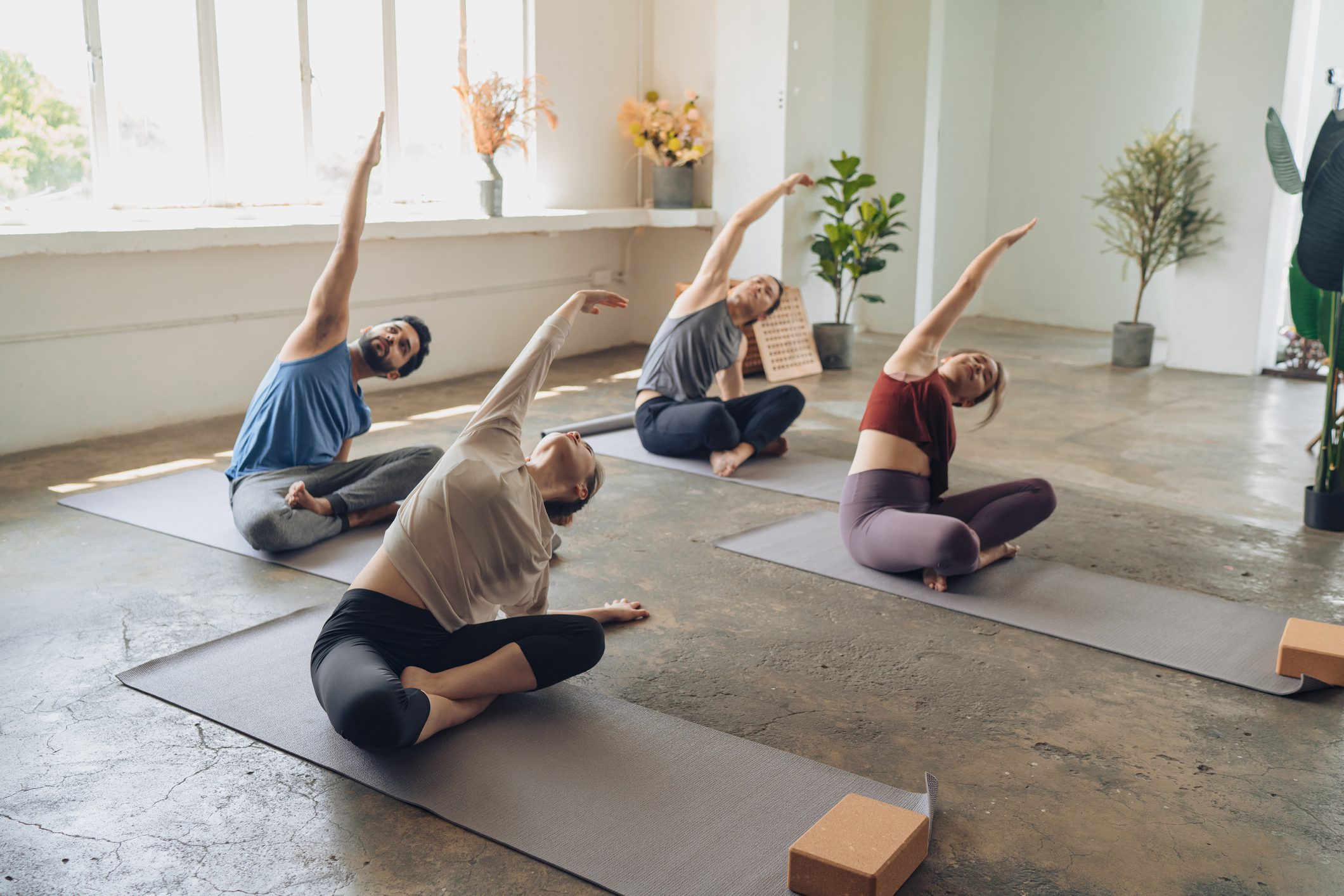Yoga is not only a great form of workout but also encourages mental and physical relaxation. It helps minimize stress and anxiety while promoting flexibility, strength, and pain relief. There are yoga poses designed to relieve physical blockages such as muscle knots. Believe it or not, it also helps release emotions and tension by injecting a lot of mood-boosting endorphins into your body. All these elements lead to less stress and more peace. Yoga helps you become more aware of the transitory nature of bodily sensations, feelings, and thoughts. As a result, you will become less attached to your ideas and learn to understand your emotions better.
Research-Backed Benefits of Yoga for Stress
There is plenty of scientific evidence that supports the stress-relieving effects of yoga. As per a study done in 2018, women who did Hatha yoga three times a day for four weeks straight noticed a significant reduction in stress, anxiety, and depression levels. Yoga is a complementary medication in addition to prescription drugs.
In-depth studies are required to investigate yoga’s long-term role in releasing stress, anxiety, and depression. Similarly, a study done on a small group of adult men in 2020 showed that specific benefits of yoga stretches are highly beneficial in controlling cortisol levels and have a very positive impact on the parasympathetic nerve activity that leads to relaxation.
Similarly, another study done in 2020 showed that individuals who consecutively practiced 11-minute yoga Nidra meditation for 30 days had reduced stress levels, better sleep, and improved overall well-being. It also boosted mindfulness, minimized negative emotions, and the effects lasted even after six weeks.
Use of Yoga Breathing for Stress Alleviating
Breathing exercises in yoga known as pranayama teach you to relax, regulate your breath, and enable you to breathe deeply. It helps minimize stress levels and calms down your body and mind. These techniques can significantly improve your sleep quality and mindfulness. You can do breathing exercises at any point during the day when you feel particularly anxious or uncomfortable. Some of the popular types of pranayama include:
- Alternate nostril breathing (nadi shodhana)
- Ujjayi breathing
- Breath of fire (kapalabhati)
- Lion’s breath (simhasana)
- Sitali breath
- Humming bee breath (bhramari)
Yoga Poses for Stress Relief
Certain poses are highly beneficial for relieving stress:
- Cat-cow pose: This pose will connect your breath to your movement, which helps to calm down your mind and release tension from your body.
- Child’s pose: This is another great post to try. It helps you create an inward focus, restore your energy, and promote mental and physical relaxation.
- Corpse pose: Focus on your breathing as you calm your mind and let go of the stress. This is a beginner-friendly pose and brings immense relaxation.
Yoga Meditation for Stress Relief
You either practice meditation on its own or make it a part of your yoga routine. You can try different meditation poses for comfort and convenience: sitting on the floor, couch, or chair. There are standing up, walking, and lying down meditations as well. It would help if you tried a couple of them to find one that fits you best. If you struggle with yoga meditation, you can find yoga classes or an instructor to help you.
Once you get the hang of it, stick to a particular routine for quite some time before advancing to the next one. Yoga Nidra, known as yogic sleep, is a guided meditation in person or with a teacher. It promotes deep relaxation, alleviates stress levels, and promotes better sleep. It is an excellent option if you are too tired or lazy to perform asanas or do extended seated practices but still want to feel relaxed. This type of yoga uses the help of an audio recording.
Essential Tips to Keep in Mind
Yoga is very effective when trying to calm your mind and body. It is essential to adhere to the following tips to ensure you experience the most serenity:
Release All Kinds of Negative Thoughts
We all think a gazillion thoughts during the day. Unfortunately, most of them are pretty stressful. Yoga is the time when you have to let go of these thoughts. It is the time to practice awareness, detachment, and acceptance. Focus on the present moment, and do not let negativity get in your way. Aim at letting go of all your thoughts. It is pretty hard initially, but once you get the hang of it, you will achieve a calmer, positive, and healthier state of mind.
Employ Stress Relief Techniques
To manage stress, you need to change all areas of your life. Have a look at your schedule. See if it is too packed or not. If you can free up a bit of space for yourself in your day for relaxation, exercises, and yoga, make sure to do that. Practice deep breathing all day long whenever you remember it. If you find yourself intertwined in a thought pattern, call yourself out.
Consistency Is Key
To see yoga’s benefits, you need to be consistent with your practice. Just like anything in life, doing yoga for one day in a week and then forgetting about it won’t make much of a difference. Make sure to schedule time for yoga on a daily or weekly basis. You can start small and gradually build up the duration or number of days.
The Bottom Line
Yoga, meditation, and exercise can work wonders to minimize and manage stress levels. In some parts of the world, yoga and meditation are treatments for various mental health issues combined with meds. The key is to find something that works for you. You must try different yoga and meditation forms to see which suits you best. Once you do find it, the results are simply impeccable.
